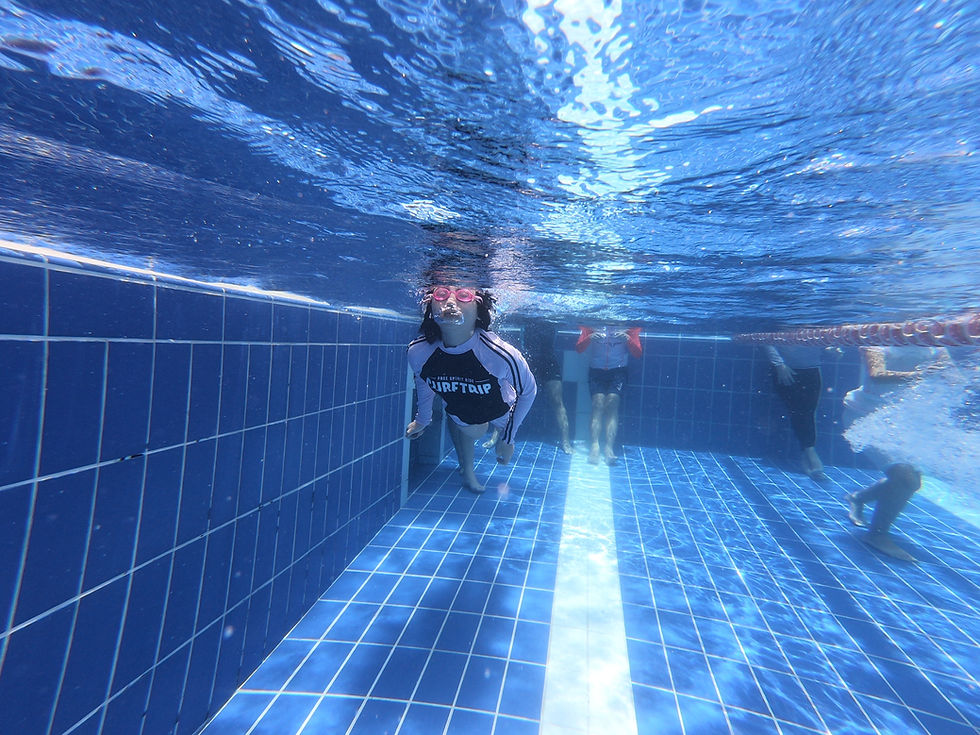The Benefits of Swimming for Seniors: A Low-Impact Exercise
- SG Sink Or Swim

- Sep 5
- 3 min read

As we age, maintaining an active lifestyle becomes more important than ever. Yet, many traditional exercises — like running or weightlifting — can put strain on aging joints, muscles, and bones. This is where swimming shines as the perfect fitness option for seniors. It offers a low-impact, full-body workout that not only supports physical health but also boosts mental well-being.
Whether it’s leisurely laps, water aerobics, or group classes, swimming provides seniors with a safe, effective, and enjoyable way to stay fit.
🌊 Why Swimming Is Ideal for Seniors
Swimming is considered a low-impact exercise because the buoyancy of water supports body weight, reducing stress on joints and muscles. This makes it especially beneficial for older adults who may struggle with arthritis, osteoporosis, or other mobility issues.
Key advantages include:
Gentle on the joints while still providing resistance for muscle strength.
Customizable intensity — seniors can swim at their own pace.
Inclusive for all levels — whether new to exercise or lifelong athletes.
🏊♂️ Physical Benefits of Swimming for Seniors
1. Improves Cardiovascular Health
Swimming is an excellent form of aerobic exercise that strengthens the heart, lowers blood pressure, and improves circulation.
2. Enhances Muscle Strength and Flexibility
Every stroke works multiple muscle groups. The resistance of water builds strength while allowing for smoother, more controlled movements that also increase flexibility.
3. Supports Weight Management
Swimming burns calories efficiently without putting stress on the body, making it a great way to maintain a healthy weight.
4. Strengthens Bones and Reduces Risk of Osteoporosis
While swimming isn’t weight-bearing, it improves posture, balance, and coordination, which helps prevent falls — a common concern for seniors.
5. Promotes Better Balance and Mobility
Water-based exercise helps maintain core stability, balance, and joint range of motion, contributing to greater independence in daily life.
🧠 Mental and Emotional Benefits
Reduces Stress and Anxiety – The rhythmic movement of swimming promotes relaxation and mindfulness.
Boosts Mood – Regular swimming stimulates the release of endorphins, the body’s natural "feel-good" hormones.
Improves Sleep – Physical exertion combined with relaxation from water exercise supports better sleep quality.
Social Interaction – Group swim classes or water aerobics help seniors stay socially engaged, reducing feelings of isolation.
🩺 Swimming for Seniors with Health Conditions
Swimming is often recommended for seniors managing:
Arthritis – water eases joint stiffness and pain.
Diabetes – helps regulate blood sugar levels.
Chronic pain – low-impact movement reduces discomfort while promoting mobility.
Recovery after surgery – gentle aquatic therapy supports rehabilitation.
⚠️ Seniors should always consult their doctor before beginning a new exercise routine, especially if they have chronic health issues.
✅ Safety Tips for Senior Swimmers
Always warm up and cool down to prevent muscle strain.
Swim in supervised areas with lifeguards present.
Stay hydrated — you can still sweat while swimming.
Use flotation devices or kickboards for extra support if needed.
Consider group classes for added safety and encouragement.
🏁 Conclusion
Swimming is more than just exercise — it’s a lifeline to healthier aging. For seniors, it offers a way to stay active, reduce pain, improve heart health, and boost mood without putting unnecessary stress on the body. Best of all, it can be a fun, social, and sustainable activity well into later years.
By embracing swimming as part of a regular routine, seniors can enjoy the combined benefits of fitness, independence, and overall well-being in a way that truly supports longevity.





Comments